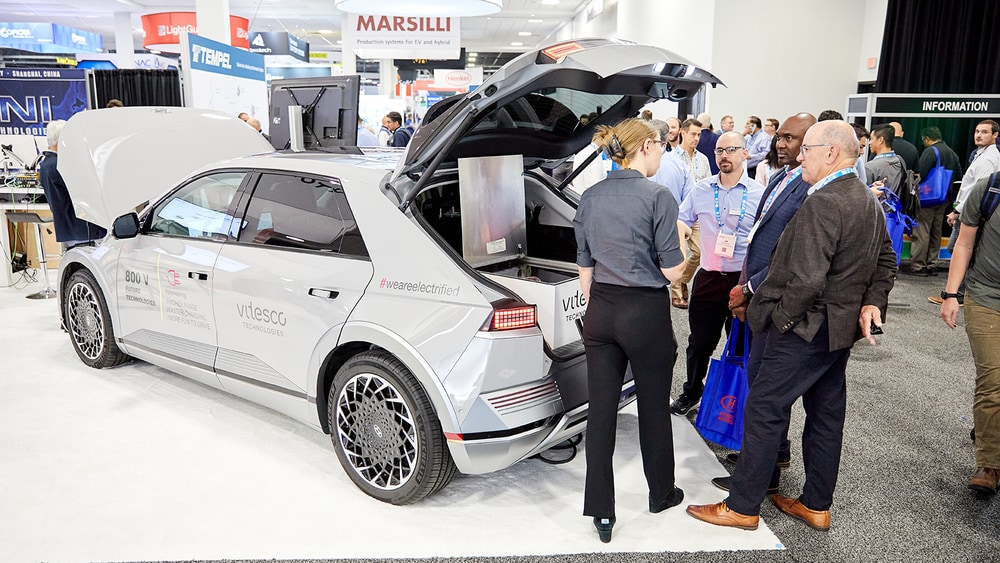The Battery Show Detroit 2024: Innovations in Battery Technology
The Battery Show Detroit 2024 seemed reminiscent of the good-old-days trade shows—huge and filled with engineers, much like the traditional SAE Shows. This year, the focus was solely on battery and EV technology breakthroughs. Amidst a crowd of 19,000 attendees, we sifted through numerous booths to uncover the coolest technology aimed at enhancing the performance and safety of electrified vehicles.
Fire Fighters
The unfortunate reality of most EV batteries on the road is that their liquid electrolyte oxides are highly flammable. They possess their own oxygen, making battery fires notoriously difficult to extinguish. Current standards require flame retardants to thwart thermal runaway for at least 5 minutes, giving passengers time to exit safely. Numerous booths at The Battery Show Detroit 2024 highlighted upgrades to enhance this specification.
Nexeo STAMAX: 5 minutes at 1,200⁰C. This advanced thermoplastic composite material by SABI Petchem, measuring just 4mm thick, significantly outlasts traditional aluminum battery cases, which can burn through in 20 to 30 seconds at similar temperatures.
Nagase Thermal Barrier: 30 minutes at 1,500⁰C. This innovative silicon rubber-based material, weighing 1.6 kg/l, is expected to be used as a wrap for battery cases in upcoming GM, SAIC, and Geely vehicles in production.
NanoTIM Thermal Interface Material: 20 minutes at 2,000⁰C. This silicon foam material serves as a 2mm separator between cells, effectively preventing thermal runaway from spreading. It’s already being utilized in electrified Hyundai Group vehicles.
Battery-Fire Prevention Solutions
At The Battery Show Detroit 2024, Prestone introduced three new coolants specifically designed for battery and fuel-cell electric vehicles. Unlike conventional coolants used in gas-powered vehicles, these new formulations minimize electrical conductivity risks, which can lead to battery fires, especially if the coolant comes in contact with damaged battery packs during accidents.
The two new BEV coolants have a conductivity of less than 100 µS/cm, ensuring safety in the event of a battery crash. These products are expected to replace traditional coolants in existing EV setups, enhancing safety and reliability.
Lithium Sulfur Battery Developments
Stellantis has invested in Liion, which is now aiming to launch lithium-sulfur batteries. With energy densities anticipated to reach 315 Wh/kg by year-end and raw material costs projected to halve by 2030, this technology is poised to make significant advances. A production facility is currently in development.
Zeta Energy showcased its innovative sulfurized-carbon cathode technology, achieving exceptional performance stats similar to those of lithium-sulfur batteries, but without the dendrite issues common in traditional designs. The upcoming pilot production facility aims for a 1MWh output targeted for 2025.
Exploring Solid-State Batteries
During the event, discussions surrounding solid-state batteries continued. While numerous companies are researching this technology, Schaeffler showcased a novel mechanical solution to manage the expansion and contraction of these batteries, ensuring durability and longevity.
Electro-Mechanical Innovations
Amsted Automotive demonstrated an innovative motor disconnect feature relevant to electric vehicles. This approach allows the motor to freewheel when not in use, enhancing efficiency and performance compared to traditional friction-based systems.
Dupont Vespel presented their non-conductive bearing sleeves, which are crucial for preventing electrical corrosion in electric motors. This economic alternative enhances the longevity of components in electric vehicles.
The advancements showcased at The Battery Show Detroit 2024 indicate a promising future for electric vehicle technology, from battery safety innovations to performance enhancements. These developments are crucial for ensuring the safety and efficiency of the next generation of electrified vehicles.




